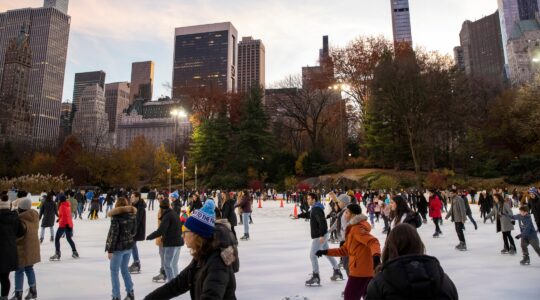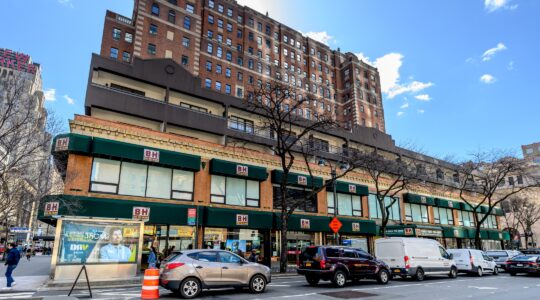Tucked into the Gothic arches and dank, mossy halls of Trinity College Dublin is the Weingreen Biblical Antiquities Museum. It’s a small collection of artifacts from around the eastern Mediterranean, spanning the ninth millennium B.C.E. to the late Middle Ages, and it was renamed in the 1970s to honor one Professor Weingreen, a Hebrew scholar who taught at Trinity for 40 years.
The Weingreen Museum is as good a metaphor as any for contemporary Dublin — a city that is at once quintessentially Irish and also increasingly cosmopolitan, with a small but well-integrated Jewish community.
What always surprises me about Dublin, city of shamrocks and Molly and Leopold Bloom, is its intimate scale. Dublin feels much more like a friendly small town that just happens to have a few crowded squares and busy boulevards.
That friendliness extends, in large part, to relations between the many national, ethnic and cultural groups who now call Dublin home — everyone from the workers to shop clerks is likely to hail from Poland, India, China or Nigeria. With religious tensions running high in Europe these days, Dublin’s pluralism feels relatively comfortable.
And while Ireland, like every country in Europe, has its own history of anti-Semitism, Irish Jews I have spoken with say they find Dublin to be a friendlier place for Jews than many parts of the Continent.
Indeed, according to local Jewish organizations, the Irish-Jewish community — which dates back a thousand years, but has never been particularly large — is actually growing, thanks to an influx of Jewish professionals drawn to Ireland’s recent economic boom and the proliferation of technology corporations.
Dublin’s Jewish population is now estimated at around 1,300, more than half the Irish total, supporting a well-established network of synagogues, schools and services. Many visitors call before stopping by the Dublin Hebrew Congregation, a major landmark in the city center; formed by the merger of two synagogues a decade ago, it is Dublin’s central Jewish institution.
For a comprehensive look at Irish Jewry — whose modern community coalesced with waves of European immigration between the late 19th and early 20th centuries — head to the Irish Jewish Museum, a modest but lovingly preserved collection of pictures and artifacts documenting Irish-Jewish history. The museum is housed in what used to be the Walworth Synagogue, which closed down in the 1970s as the once-Jewish Portobello neighborhood saw an exodus to the suburbs. After years of neglect, the temple was refurbished as a centrally located museum, proudly inaugurated by Irish-born Israeli President Chaim Herzog in the mid-1980s.
Herzog is just one of many historically prominent Irish Jews, and he is fondly remembered not only at the museum, but also at the Herzog Centre for Jewish and Near Eastern Religion and Culture at Trinity College. Given that Herzog’s own father was Ireland’s chief rabbi in the early 1900s, it is fitting that Trinity chose the Herzog name to honor when dedicating Ireland’s first — and still only — university center devoted to Jewish scholarship. In addition to courses and Holocaust education, the Herzog Centre also hosts lectures and other public events.
The broader diversity of modern Europe is celebrated at the annual Silk Road Film Festival in March, an opportunity to view films from across the region that encompassed the ancient Silk Road, from Southern Europe through the Middle East to Central and East Asia. The Silk Road Festival is held from March 18-22, just after Ireland’s biggest party: St. Patrick’s Festival — yes, they need four days, not one.
From March 14-17, Dublin goes wild with an open-air celebration all over town. Girls wear short skirts and “Kiss Me, I’m Irish” antennae, boys travel in packs from pub to pub, and everyone wears green. The action centers around Temple Bar, the cobblestoned central nightlife district that remains distinctly local despite all the tourism.
The same could be said of Dublin overall. A decade after the so-called Celtic Tiger economic boom burned and then crashed, Dublin still has plenty of dusty, wooden-floor bookshops, cafés and pubs where you feel right at home the first time you enter.
And every day of the year, it’s St. Patrick’s favorite hue in St. Stephen’s Green, the lovely, landscaped park at the heart of the city. If it starts to rain, you can duck into one of Dublin’s newest — and most delightful — attractions: the Little Museum, a free collection devoted to events of Ireland’s 20th century. Housed in a Georgian mansion just off the park, the Little Museum offers a look at James Joyce, U2 and plenty more of what gives this city its enduring appeal.
The New York Jewish Week brings you the stories behind the headlines, keeping you connected to Jewish life in New York. Help sustain the reporting you trust by donating today.




